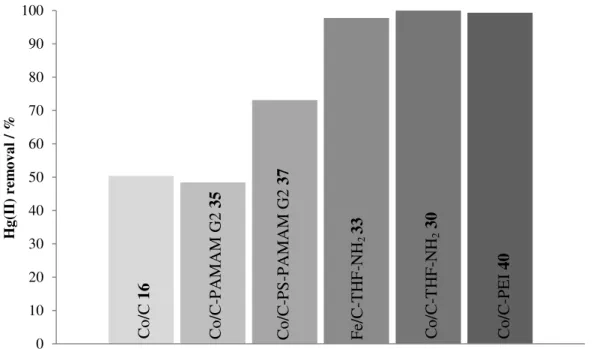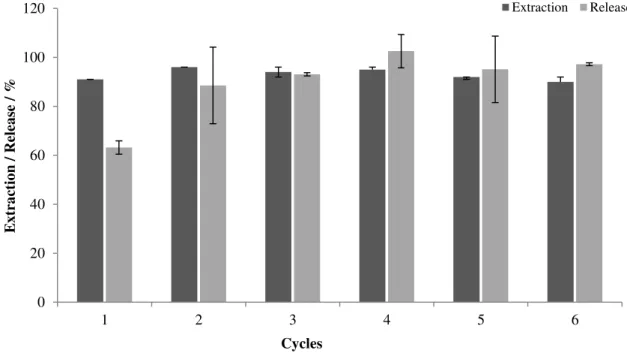Functionalization of Magnetic Nanoparticles and their Application as Recyclable Support for Scavengers and Catalysts
Volltext
Abbildung

![Figure 2. (A) Co/C-PEI nanobeads 40 dispersible in water after synthesis. [36] (B) Transmission electron microscopy (TEM) picture of PEI functionalized Co/C NPs 40](https://thumb-eu.123doks.com/thumbv2/1library_info/3945654.1534231/27.892.223.692.105.290/figure-nanobeads-dispersible-synthesis-transmission-electron-microscopy-functionalized.webp)


ÄHNLICHE DOKUMENTE
Single cobalt atoms deposited onto platinum (111) are found to have a magnetic anisotropy energy of 9 millielectron volts per atom arising from the combination of unquenched
Keywords: Magnetizable implant, Drug targeting, Magnetic nanoporous silica nanoparticles, PEG, Organ accumulation, Ferritic steel, Mouse model, In vivo... To verify these
In order to correlate the magnetic properties to the structure of the particles we performed transmission electron microscopy (TEM) investigations of FePt particles on both,
Starting with the deterministic spin dynamics on short time scales which plays a crucial role in high-speed data storage [6,7,8]' we go on to the probabilistic long-time
As the measurements of the magnetic moment used for the calculation of the effective diffusion parameters start about half a day after the first exposure to air, the first reac- tion
Novel magnetic iron oxide nanoparticles coated with poly(ethylene imine)-g-poly(ethylene glycol) for potential biomedical application: synthesis, stability,
For wildtype magnetosomes (nega- tive control) only low, insignificant background activities were detected. Since the GOx enzyme is likely to be functional as a dimer, monomers
A Reusable Mesoporous Nickel Nanocomposite Catalyst for the Selective Hydrogenation of Nitroarenes in the Presence of Sensitive Functional Groups.. Robust Microporous Monoliths





